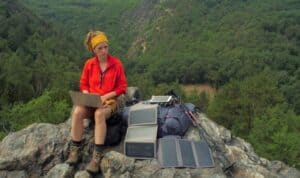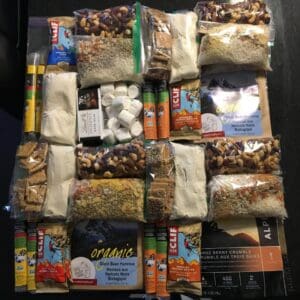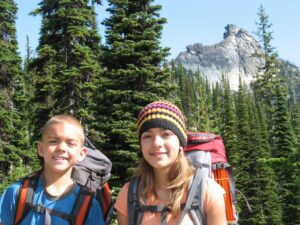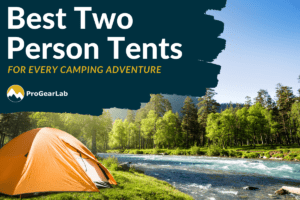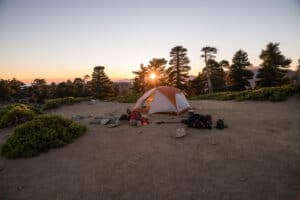101 Essential Backpacking Tips for Beginners

Looking to take your backpacking game to the next level? Check out these 101 backpacking tips for beginner backpackers that will have you hitting the trail like a pro. We want your first overnight backpacking trip to be a great backpacking experience. From packing essentials to trail etiquette, this comprehensive guide has got you covered. Get ready to take your backpacking trips to the next level with these invaluable tips and tricks!
1. Plan your route in advance
Research your chosen trail, check the weather, and prepare for any potential hazards. Choose an easy backpacking trip for you your first backpacking trip. Try to find a trip with reasonable elevation gain.
2. Start with shorter hikes
A great way to physically prepare is with day hiking. Gradually build up to longer day hikes to improve your fitness and endurance.
3. Choose lightweight gear
Reduce the overall pack weight by choosing gear made from lightweight materials.
4. Test your gear beforehand
Try out your gear at home to make sure it works properly and fits comfortably.
5. Invest in a good backpacking backpack
It is very important to get a properly fitting backpack. Choose a backpack with a sturdy frame, padded straps, and plenty of pockets for storage.
6. Pack light
Bring only the essentials to minimize your backpack weight and reduce fatigue.
7. Use compression sacks
Use compression sacks to reduce the size of your gear and save space in your backpack.
8. Bring a map and compass
Learn how to use a map and compass and bring them with you in case you get lost.
9. Pack high-energy snacks
Bring high-energy snacks like trail mix, energy bars, and jerky to keep you fueled throughout the day.
10. Stay hydrated
Bring plenty of water or a water filtration system to stay hydrated on the trail.
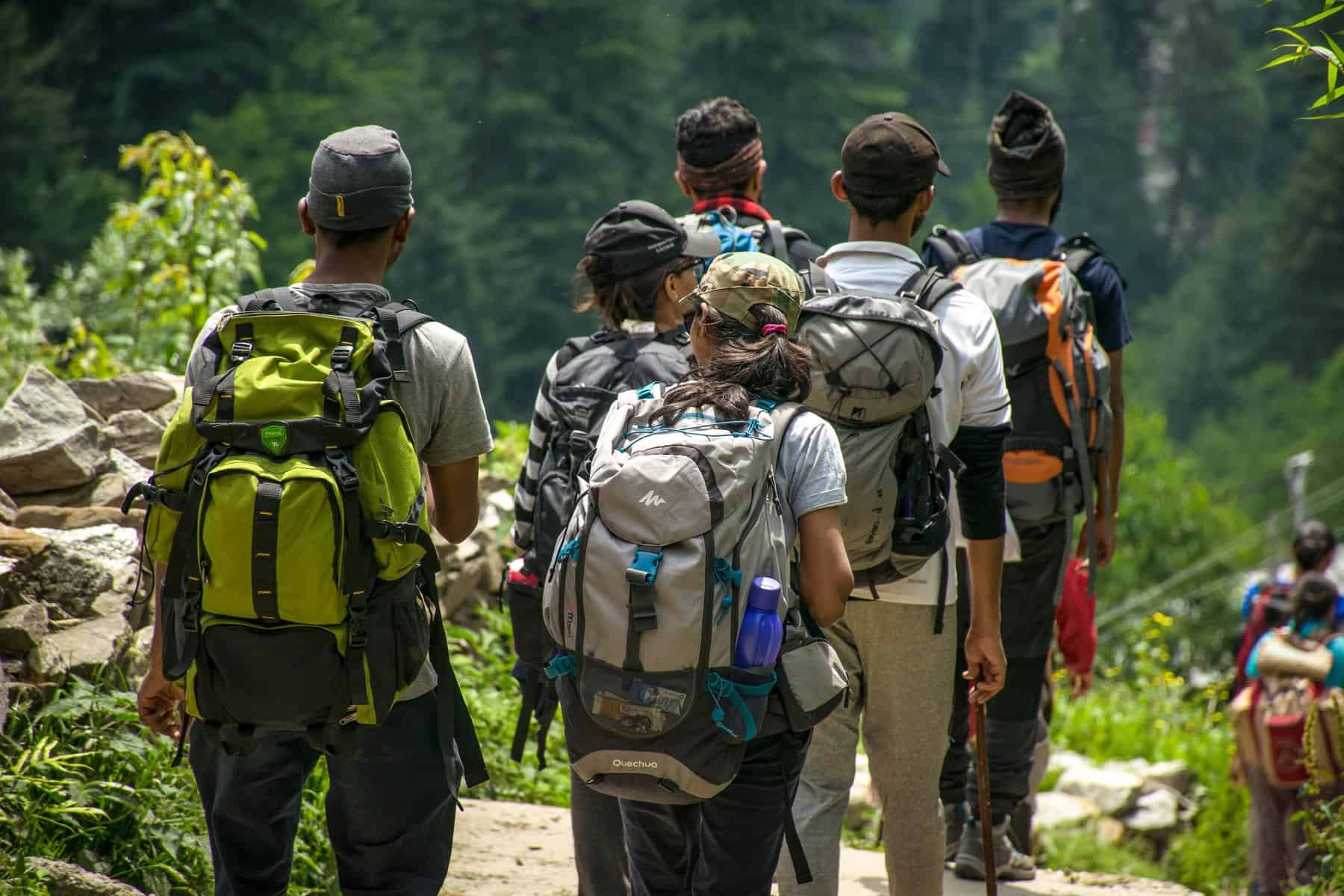
11. Invest in good hiking boots
Choose boots that fit well and provide good traction to prevent blisters and injuries. Wool socks can help prevent blisters and keep your feet warm even if they are wet.
12. Pack a hat and sunglasses
Protect your head and eyes from the sun by bringing a hat and sunglasses.
13. Bring sunscreen
Protect your skin from the sun by applying sunscreen with a high SPF.
14. Pack rain gear
Bring a rain jacket and pants to stay dry in case of rain.
15. Bring a warm jacket
Bring a warm, lightweight jacket to stay warm in cold weather.
16. Wear layers for your hiking clothes
Dress in layers to adjust to changing temperatures throughout the day. There are three layers to any system a base moisture-wicking layer, a mid-layer to add warmth and insulation, and an outer layer to keep off wind and rain.
17. Pack a headlamp or flashlight
Bring a headlamp or flashlight to navigate in the dark or in low-light conditions.
18. Bring a first-aid kit
Pack a first aid kit with essential items like bandages, gauze, and pain relievers.
19. Know basic first aid
Learn basic first aid skills to treat injuries and illnesses on the trail.
20. Bring a multi-tool
Pack a multi-tool with a knife, pliers, and other useful tools.
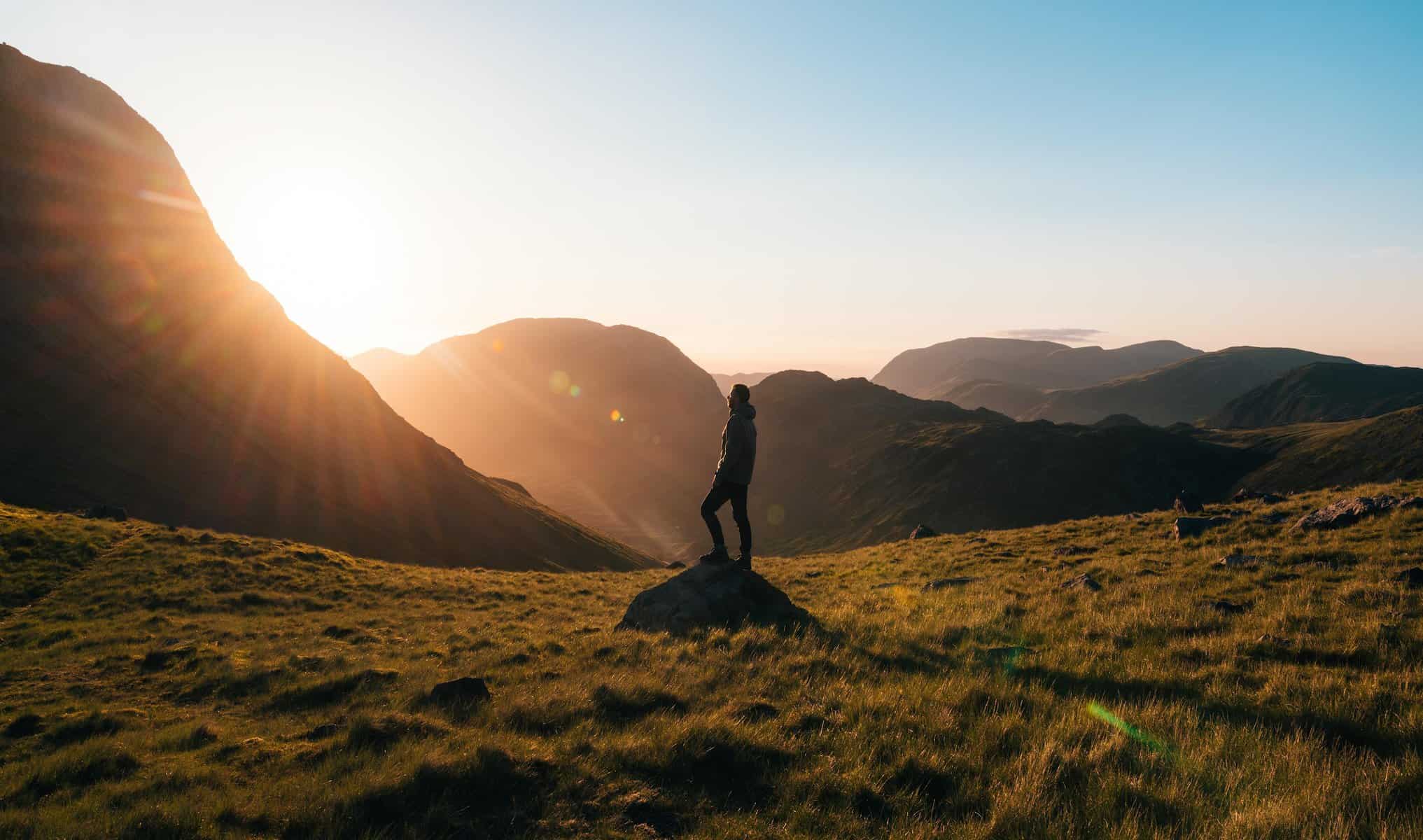
21. Use a portable water filtration system
Bring a portable water filtration system to purify water from natural sources.
22. Choose a lightweight, compact backpacking stove
Bring a lightweight, compact stove to cook meals and boil water.
23. Bring a lightweight, durable cookware set
Choose lightweight, durable cookware made from materials like titanium or aluminum.
24. Pack a lightweight, collapsible water bottle
Save space in your backpack by using a lightweight, collapsible water bottle.
25. Pack lightweight, quick-drying towels
Choose towels made from lightweight, quick-drying materials like microfiber.
26. Use a lightweight, portable camp chair
Relax and enjoy the scenery with a lightweight, portable camp chair.
27. Pack a small, portable camp table
Enjoy meals and other activities with a small, portable camp table.
28. Bring a lightweight, portable tent
Choose a lightweight, portable tent that fits your needs and can be easily set up and taken down.
29. The right sleep system will help you get a good night’s rest
Your sleeping system consists of your sleeping bag, sleeping pad, and sleeping clothes. The system works together to ensure you have a comfortable backpacking trip.
30. Sleeping pads are not just for comfort they are critical for your warmth
Choose a sleeping pad made from lightweight, durable materials for added comfort and insulation from the cold ground.

31. Use trekking poles for added support
Use trekking poles to reduce strain on your knees and improve your balance on the trail.
32. Pack a portable, lightweight hammock
Relax and take a break in a portable, lightweight hammock.
33. Consider a guided backpacking trip
There are many organizations and clubs that have trips you can join that are geared toward first-time backpackers.
34. Bring a waterproof backpack cover
Keep your backpack and its contents dry in case of rain by using a waterproof backpack cover.
35. Use a tarp for shelter
Use a tarp to create a shelter in case your tent fails or to provide shade during the day.
36. Bring a small, lightweight camera
Capture memories of your backpacking trip with a small, lightweight camera.
37. Pack a portable, lightweight power bank
Keep your electronic devices charged with a portable, lightweight power bank.
38. Bring a bear canister to store food
Use a bear canister to store food and prevent bears or other animals from getting to it. Be sure to place your food and scented items in the canister.
39. Know how to hang a bear bag if hiking in bear country
If a bear canister isn’t required, learn how to hang a bear bag to keep food out of reach of bears and other animals.
40. Choose clothing made from quick-drying materials
Choose clothing made from quick-drying materials like nylon or polyester to stay comfortable in wet weather. 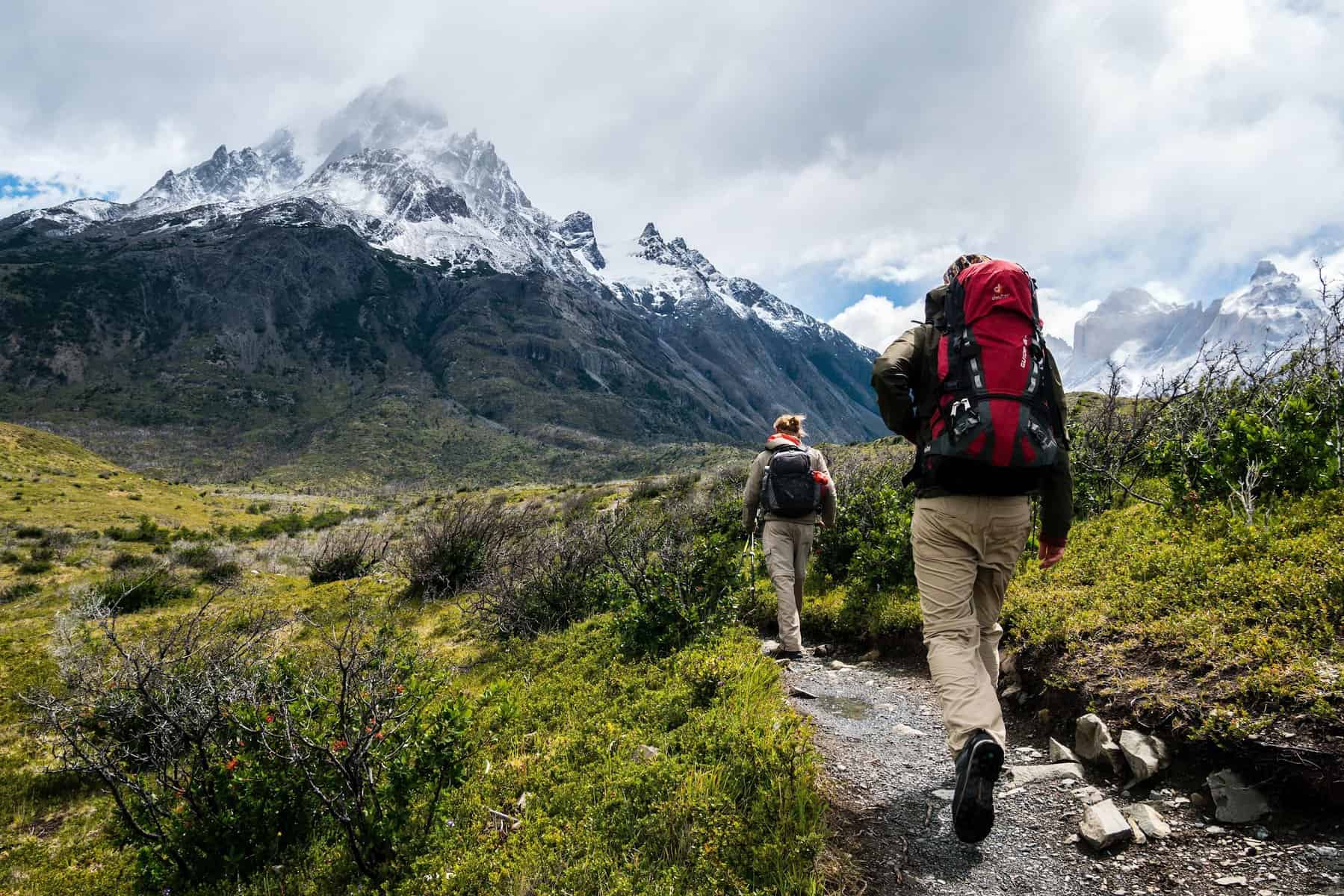
41. Bring a waterproof phone case
Protect your phone from water damage by using a waterproof phone case.
42. Choose a backpacking tent with good ventilation
Choose a tent with good ventilation to reduce condensation and keep you comfortable.
43. Bring a rain cover for your backpacking pack
Use a backpack rain cover to keep your backpack dry during rainy weather.
44. Use a hydration system
Use a hydration system like a bladder or hose to make drinking water on the trail more convenient.
45. Pack a small, lightweight book or e-reader
Enjoy some entertainment on the trail with a small, lightweight book or e-reader.
46. Bring a small, portable speaker
Enjoy music or other audio on the trail with a small, portable speaker.
47. Use a trekking umbrella
Use a trekking umbrella to provide shade during the day or stay dry in case of rain.
48. Pack a small, portable GPS device
Use a GPS device to navigate on the trail and keep track of your progress. You can also use your phone with the proper applications. Be sure to download offline maps.
49. Bring a lightweight, portable stove with a windscreen
Choose a stove with a built-in windscreen to make cooking in windy conditions easier.
50. Bring a lightweight, portable coffee maker
Enjoy a cup of coffee on the trail with a lightweight, portable coffee maker.

51. Bring a lightweight, portable water filter
Make sure you have access to clean water on the trail with a lightweight, portable water filter.
52. Buy your backpacking gear in stages
It can be overwhelming to get all your gear at once. See if you can borrow or rent some gear to save money. Try to find the right gear on sale.
53. Bring a small, lightweight first aid kit
Be prepared for injuries or accidents on the trail with a small, lightweight first aid kit.
54. Pack a headlamp or flashlight
Ensure that you have a reliable source of light on the trail with a headlamp or flashlight.
55. Bring a compact, lightweight multi-tool
A multi-tool can be a useful tool for a variety of tasks on the trail.
56. Pack a lightweight, portable solar charger
Keep your electronic devices charged on the trail with a solar charger. Also, bring extra batteries for your non-rechargeable devices.
57. Bring a whistle
A whistle can be a useful tool for attracting attention or signaling for help in case of an emergency.
58. Consider camp shoes
Lightweight camp shoes can be great once you are at your destination. You can get your boots off and be more comfortable.
59. Check weather forecasts
Check the weather forecast before heading out on the trail to avoid any winter storms.
60. Pack a lightweight, portable camp chair
A camp chair can provide a comfortable place to relax at camp.
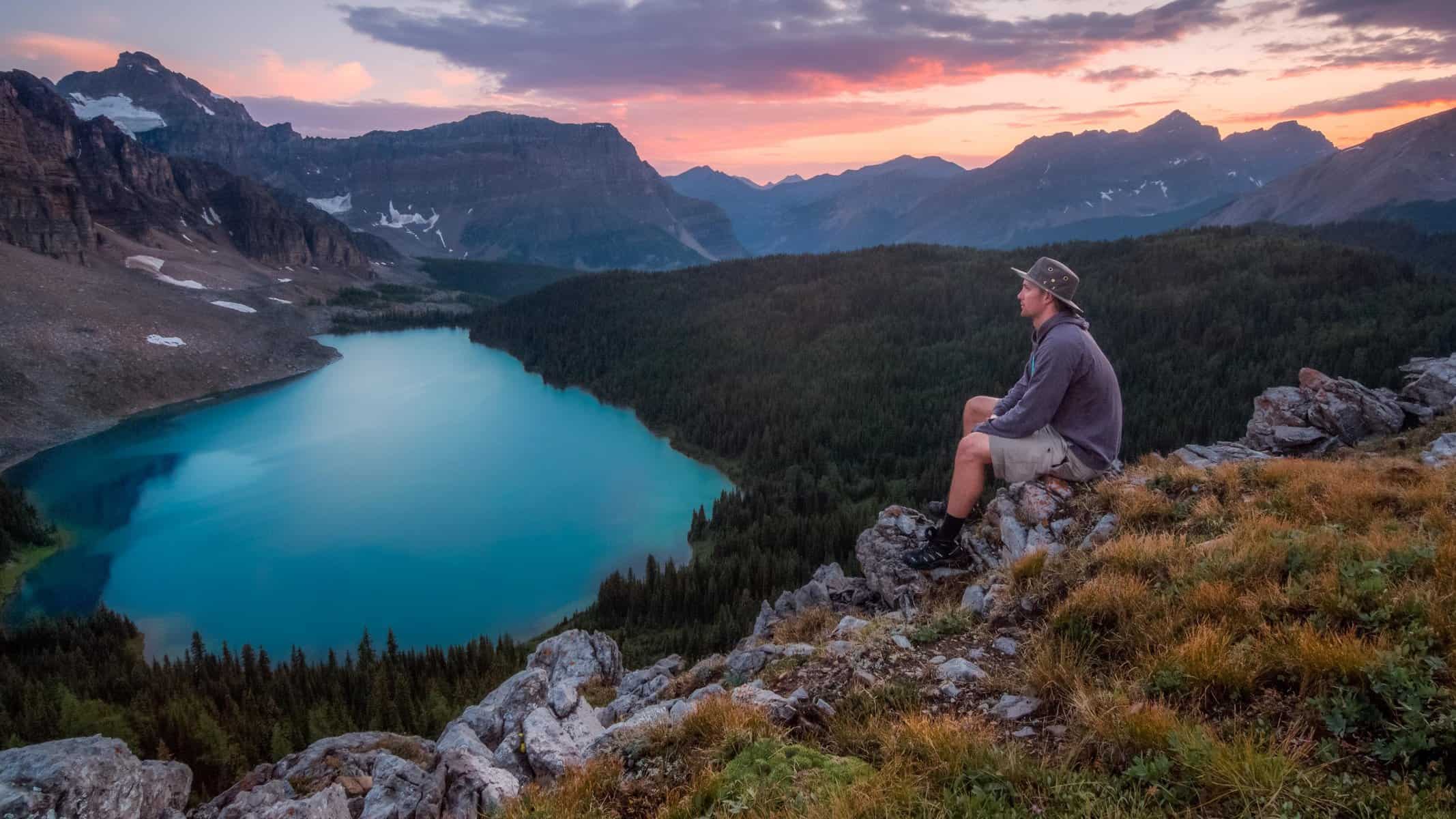
61. Bring a lightweight, portable hammock
A hammock can be a comfortable and convenient way to relax at camp or take a nap during the day.
62. Pack a lightweight, portable camp stove
A camp stove can be a convenient way to cook meals at camp.
63. Bring a lightweight, portable camping pillow
A camping pillow can provide a comfortable place to rest your head at night.
64. Bring a packable, lightweight rain jacket
Stay dry on the trail with a packable, lightweight rain jacket.
65. Choose a sleeping bag appropriate for the temperature
Sleeping bags are gender specific and have a temperature rating. Make sure your sleeping bag is appropriate for the expected temperature range to ensure a comfortable night’s sleep. If you know you are a cold sleeper opt for a slightly warmer sleeping bag.
66. Bring a packable, lightweight puffy jacket
A puffy jacket can provide extra warmth on cold nights or in case of unexpected drops in temperature.
67. Bring a lightweight, portable camp shower
A camp shower can be a convenient way to stay clean on the trail.
68. Pack a lightweight, portable backpacking chair
A backpacking chair can provide a comfortable place to rest during breaks on the trail.
69. Bring a portable, lightweight insect repellent
Keep insects at bay with a portable, lightweight insect repellent.
70. Pack a portable, lightweight camp table
A camp table can provide a convenient surface for cooking or eating at camp.

71. Choose a backpack with good weight distribution
Make sure your backpack is designed for good weight distribution to reduce strain on your back and shoulders.
72. Bring a portable, lightweight camping stove with a piezo igniter
A camping stove with a piezo igniter can make starting a fire for cooking easier and more convenient.
73. Bring a portable, lightweight camp oven
A camp oven can provide a convenient way to bake or roast food at camp.
74. Pack a lightweight, portable camping cot
A camping cot can provide a comfortable place to sleep at night.
75. Bring a portable, lightweight camping fan
A camping fan can provide a refreshing breeze on hot days or in stuffy tents.
76. Pack a lightweight, portable camping heater
A camping heater can provide warmth on chilly nights or in cold weather.
77. Bring a portable, lightweight camping shower tent
A camping shower tent can provide privacy while showering at camp.
78. Choose a tent with good ventilation
Make sure your tent has good ventilation to prevent condensation buildup and keep the air fresh inside.
79. Pack a lightweight, portable tent footprint
A tent footprint can help protect your tent floor from abrasion and moisture.
80. Bring a portable, lightweight camp sink
A camp sink can provide a convenient way to wash dishes or other items at camp.
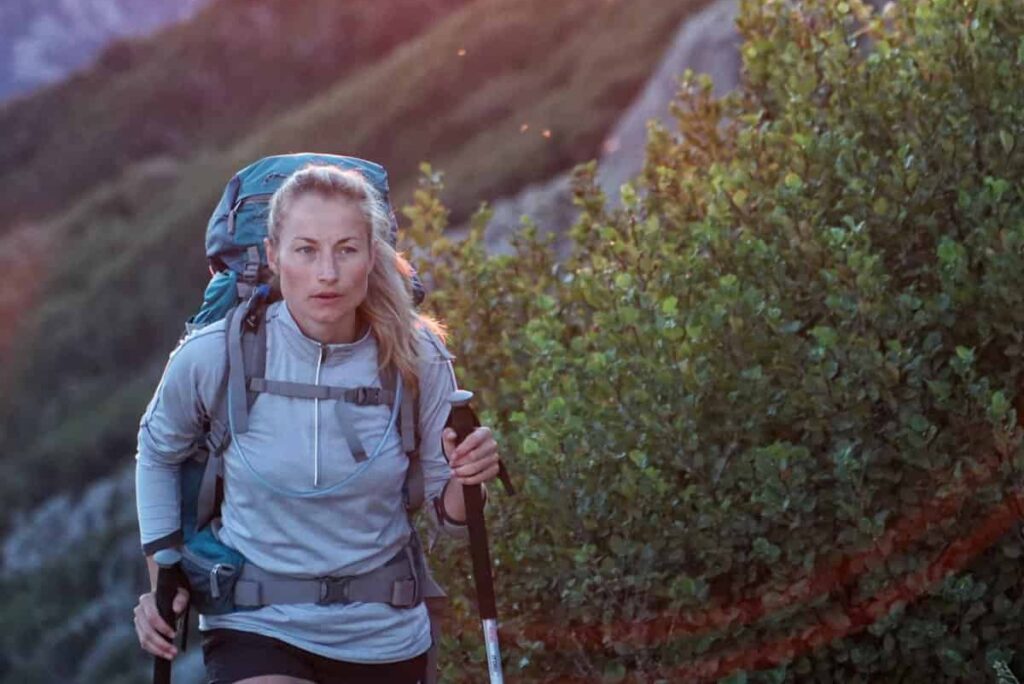
81. Pack a lightweight, portable camping lantern
A camping lantern can provide additional light in your tent or around camp at night.
82. Bring a portable, lightweight camping grill
A camping grill can provide a convenient way to cook food at camp.
83. Choose lightweight, quick-drying clothing
Opt for clothing made from lightweight, quick-drying materials to stay comfortable on the trail. Choose hiking pants that are not made from cotton.
84. Pack a portable, lightweight camping showerhead
A camping showerhead can provide a more convenient way to shower at camp than a gravity-fed bag.
85. Bring a portable, lightweight camping tableware set
A camping tableware set can provide a convenient way to eat meals at camp.
86. Choose a backpack with a hydration system
A backpack with a built-in hydration system can provide easy access to water while hiking.
87. Pack a portable, lightweight camping grill grate
A camping grill grate can provide a surface for grilling food over an open fire.
88. Be mindful of campfire safety
Campfires are great. They can help you dry out your wet clothes. Just be sure that out is dead out. Always use existing fire rings.
89. Choose a tent with a vestibule
A tent with a vestibule can provide additional space for storing gear and getting out of the rain.
90. Pack a portable, lightweight camping toilet
A camping toilet can provide a more hygienic and convenient way to use the bathroom at camp.

91. Bring a portable, lightweight camping shower bag
A camping shower bag can provide a convenient way to shower at camp when a shower is not available.
92. Choose a tent with a bathtub floor
A tent with a bathtub floor can help keep water out in case of rain or wet ground.
93. Ten essentials
Understand and always carry the ten essentials. Be sure to always carry these on whether backcountry camping or just out for a day trip.
94. Bring a portable, lightweight camping washbasin
A camping washbasin can provide a convenient way to wash dishes or other items at camp.
95. Choose a backpack with a comfortable hip belt
A comfortable hip belt can help distribute weight and reduce strain on your back and shoulders.
96. Pack a portable, lightweight camping solar shower
A camping solar shower can provide a convenient way to shower at camp without needing electricity.
97. Don’t forget to bring some toilet paper
Don’t forget to bring some toilet paper. Be sure to follow no-trace principles and bury your waste. Also, be sure to be at least 200 feet from any water source.
98. Choose a tent with a mesh ceiling
A tent with a mesh ceiling can provide better ventilation and stargazing opportunities.
99. Pack a portable, lightweight camping windscreen
A camping windscreen can provide a barrier against wind and help protect your camp stove flame.
100. Bring a portable, lightweight camping coffee maker
A camping coffee maker can provide a convenient way to make coffee at camp.
101. Choose a backpack with adjustable shoulder straps
Adjustable shoulder straps can help ensure a comfortable fit and reduce strain on your shoulders and neck.
Backpacking can be an incredibly rewarding and fulfilling outdoor activity, but it can also be a daunting experience for beginners. With these best backpacking tips, you can prepare for your next adventure with confidence and ease. Remember to plan ahead, pack light, and prioritize safety while enjoying the stunning beauty of nature. Whether you are a seasoned hiker or a first-time backpacker, these tips can help you make the most of your backpacking trip and create memories that will last a lifetime. So, pack your bags and hit the trail – adventure awaits!

